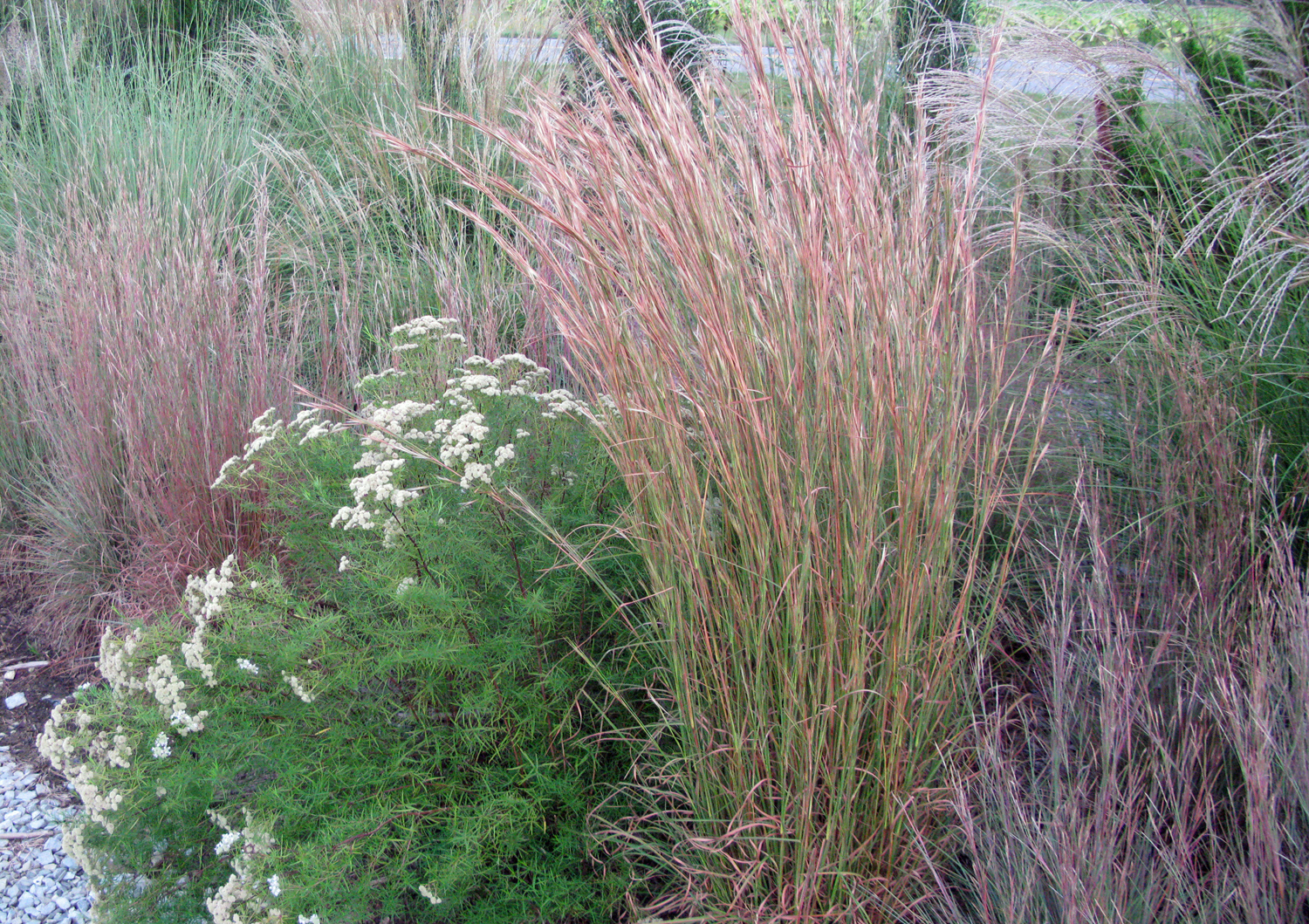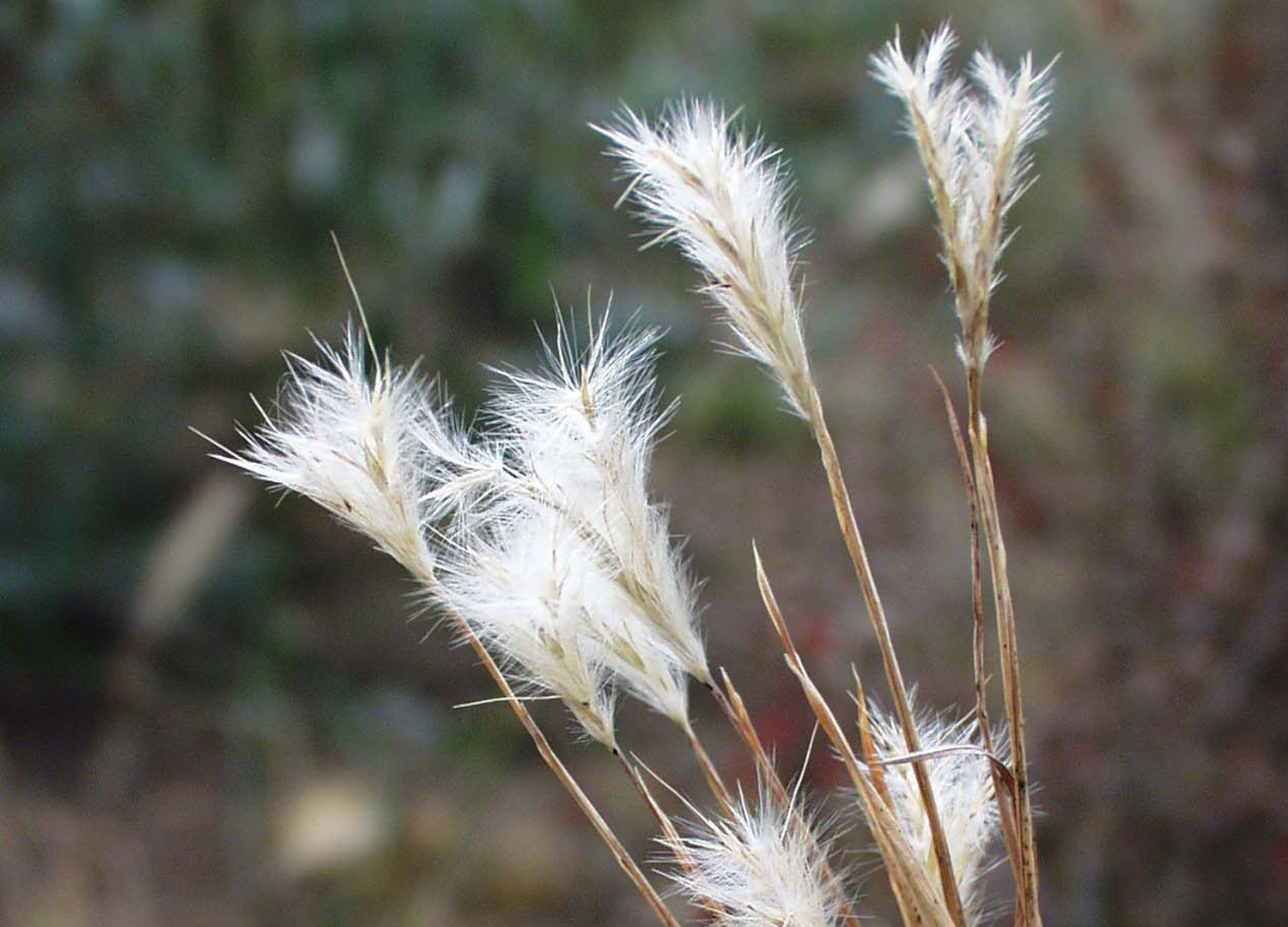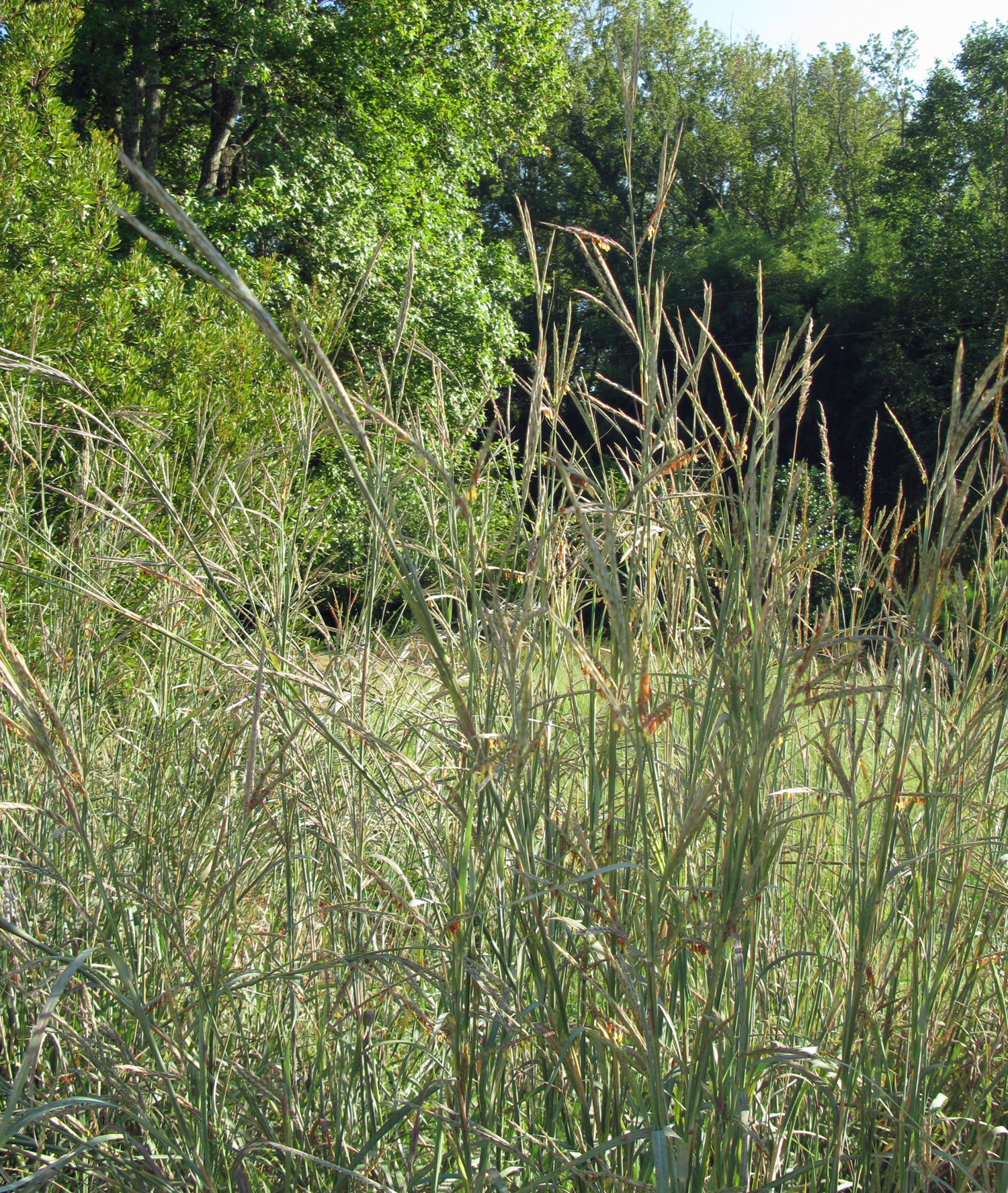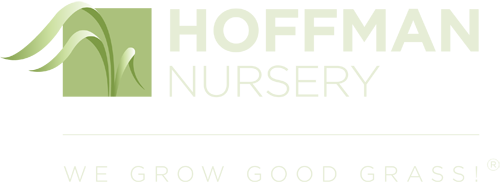Andropogon in Today’s Landscape
With their tall grass prairie origins, Andropogon seems to be custom-made for planting in masses. Yet, designers can create lovely tableaus with a few plants interplanted with other perennials and native grasses. These are wonderful additions to difficult landscapes, those with infertile, dry (or intermittently dry) soil and full sun. Do not over fertilize: they will grow too fast, become spindly, and droop. Be sure to check plant listings for comprehensive species information.
Also, foliage can be noticeably ornamental. The leaf colors of A. gerardii leap from greens and blues to reds and purple, then golden brown after frost. In winter, orange-gold fields of A. virginicus (Broomsedge) glow when backlit by the sun. A. gerardii ‘Red October’ PPAF turns brilliant red in fall.
The blooms of these grasses are complex and interesting for those willing to take a closer look. A. gerardii has curious turkey-foot shaped blooms, while A. ternarius (Split-Beard Broomsedge) produces a multitude of lovely puffs of white. Their tiny hairs catch the light and put on a brilliant show in fall. For added variety, A. glomeratus (Bushy Bluestem) bears big, bushy seed heads. All can be used in cut, or dried, flower arrangements. Blooms and foliage join together in down-to-earth, natural beauty.




